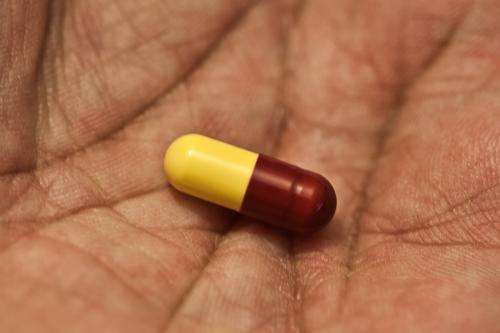Progress in diabetes drug delivery

A drug therapy for diabetes treatment is being developed by an international research team led by WA scientists, which combines an existing anti-diabetic drug with bile acids to improve the drug's delivery and prolong release.
Lead researcher and PhD candidate from Curtin University's Biotechnology and Drug Development Research Laboratory, Armin Mooranian, says that every five minutes someone is diagnosed with prediabetes or diabetes in Australia, resulting in billions of dollars spent on complications and treatment.
"Currently, the anti-diabetic drugs we have on the market are limited by their poor ability to exert complete control and treat symptoms and complications of diabetes," he says.
"Low drug absorption, which results in unnecessary add-on therapies and higher dose administration, and failure to restore bile acid disturbances in the gut are further limitations of current anti-diabetic drug therapies."
As such, the researchers utilised a well-known anti-diabetic drug, gliclazide (G)—used to treat type-2 diabetes by regulating glucose levels—mixed with the bile acid deoxycholic acid (DCA), a metabolic by-product of intestinal bacteria naturally produced in humans.
"Our approach was novel and unique in the use of bile acids, which have important functions in the body by lowering glucose levels, helping keep the gut healthy with friendly bacteria and assisting the immune system fight infections," Mr Mooranian says.
Research develops new and improved drug
The result was a new G-DCA microcapsule formulation with the potential to enhance absorption and sustain release, ultimately controlling the symptoms of diabetes.
To examine this potential, the scientists conducted a series of laboratory tests on the G-DCA microcapsules, including drug content, micro encapsulation efficiency, stability, and drug-content release at various temperatures and pH values.
These tests are prerequisites for pharmaceutical products to ensure consistency, quality, safety and treatment efficiency are maintained across shelf life.
The results revealed consistent drug and microencapsulation content and structure across samples, and uniformity of drug contents across accelerated stability studies at -20C, 5C, 25C and 40C and humidity of 35 per cent over a three-day testing period.
In addition, they found the DCA significantly enhanced the release of G at high pH values above seven, facilitating prolonged release and better absorption that targeted the lower intestine and minimised gut-metabolism.
"These results reveal that current limitations in treating diabetes...may be effectively managed with the use of dual ingredient microcapsules," Mr Mooranian says.
The team are now at the stage of conducting animal trials of their G-DCA microcapsules to ascertain their efficacy, long-term safety, and future applications in diabetes treatment.















